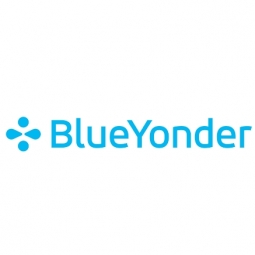Download PDF
Driving Out the Competition
Technology Category
- Functional Applications - Warehouse Management Systems (WMS)
Applicable Industries
- Food & Beverage
- Retail
Applicable Functions
- Warehouse & Inventory Management
Use Cases
- Warehouse Automation
- Inventory Management
Services
- System Integration
- Software Design & Engineering Services
The Challenge
NFT, a leading provider of time-sensitive, chilled food and drink logistics services in the UK, was facing operational challenges that were preventing it from optimizing performance. The company's traditional pick-face approach was leading to underutilization of its 220,000 square-foot warehouse, immense SKU proliferation, and almost unmanageable replenishments and put-backs. Additionally, the way manufacturers produced their products was creating issues with sell-by dates and misrotation, leading to waste, extra administrative burden, fines, claims, penalties, returns, and rejections. NFT wanted to protect its business reputation, preserve customer sales, and improve performance.
About The Customer
NFT has been at the forefront of providing time-sensitive, chilled food and drink logistics services for over 30 years. An industry leader in the United Kingdom (UK), NFT operates as the intelligent link between food and drink manufacturers and suppliers, and their retail customers. The company delivers primary and secondary services through its transport, warehousing and logistics solutions, with the objective to minimize complexity, reduce cost and drive greater customer satisfaction. On behalf of its retail supermarket and grocery customers, NFT provides a consolidated transport and distribution service point for approximately 250-400 international food and drink suppliers into the UK market. Additionally, NFT provides secondary logistics services to major UK grocery retailers, managing the entire process of collection, warehousing, consolidation and onward distribution of chilled, ambient and fresh product daily.
The Solution
NFT decided to replace its traditional pick-face approach with an automated warehouse allocation solution. After evaluating various warehouse management technologies, the company selected solutions from JDA Software’s Intelligent Fulfillment™ suite. The initial project took place at NFT’s flagship Daventry depot, and NFT is currently utilizing the solution in three of its warehouses as well as in a customer warehouse. It also leverages JDA Warehouse Management modules to handle workforce management, third-party billing, and integration functions. JDA alliance member LXE Inc., now Honeywell, provided the RF capability. The enhanced solution allowed a low-risk, phased transition by customer, delivering prioritized EBITDA wins, and NFT achieved project ROI in less than 30 days.
Operational Impact
Quantitative Benefit
Related Case Studies.

Case Study
The Kellogg Company
Kellogg keeps a close eye on its trade spend, analyzing large volumes of data and running complex simulations to predict which promotional activities will be the most effective. Kellogg needed to decrease the trade spend but its traditional relational database on premises could not keep up with the pace of demand.

Case Study
HEINEKEN Uses the Cloud to Reach 10.5 Million Consumers
For 2012 campaign, the Bond promotion, it planned to launch the campaign at the same time everywhere on the planet. That created unprecedented challenges for HEINEKEN—nowhere more so than in its technology operation. The primary digital content for the campaign was a 100-megabyte movie that had to play flawlessly for millions of viewers worldwide. After all, Bond never fails. No one was going to tolerate a technology failure that might bruise his brand.Previously, HEINEKEN had supported digital media at its outsourced datacenter. But that datacenter lacked the computing resources HEINEKEN needed, and building them—especially to support peak traffic that would total millions of simultaneous hits—would have been both time-consuming and expensive. Nor would it have provided the geographic reach that HEINEKEN needed to minimize latency worldwide.

Case Study
Improving Production Line Efficiency with Ethernet Micro RTU Controller
Moxa was asked to provide a connectivity solution for one of the world's leading cosmetics companies. This multinational corporation, with retail presence in 130 countries, 23 global braches, and over 66,000 employees, sought to improve the efficiency of their production process by migrating from manual monitoring to an automatic productivity monitoring system. The production line was being monitored by ABB Real-TPI, a factory information system that offers data collection and analysis to improve plant efficiency. Due to software limitations, the customer needed an OPC server and a corresponding I/O solution to collect data from additional sensor devices for the Real-TPI system. The goal is to enable the factory information system to more thoroughly collect data from every corner of the production line. This will improve its ability to measure Overall Equipment Effectiveness (OEE) and translate into increased production efficiencies. System Requirements • Instant status updates while still consuming minimal bandwidth to relieve strain on limited factory networks • Interoperable with ABB Real-TPI • Small form factor appropriate for deployment where space is scarce • Remote software management and configuration to simplify operations

Case Study
Energy Management System at Sugar Industry
The company wanted to use the information from the system to claim under the renewable energy certificate scheme. The benefit to the company under the renewable energy certificates is Rs 75 million a year. To enable the above, an end-to-end solution for load monitoring, consumption monitoring, online data monitoring, automatic meter data acquisition which can be exported to SAP and other applications is required.

Case Study
How Sirqul’s IoT Platform is Crafting Carrefour’s New In-Store Experiences
Carrefour Taiwan’s goal is to be completely digital by end of 2018. Out-dated manual methods for analysis and assumptions limited Carrefour’s ability to change the customer experience and were void of real-time decision-making capabilities. Rather than relying solely on sales data, assumptions, and disparate systems, Carrefour Taiwan’s CEO led an initiative to find a connected IoT solution that could give the team the ability to make real-time changes and more informed decisions. Prior to implementing, Carrefour struggled to address their conversion rates and did not have the proper insights into the customer decision-making process nor how to make an immediate impact without losing customer confidence.






